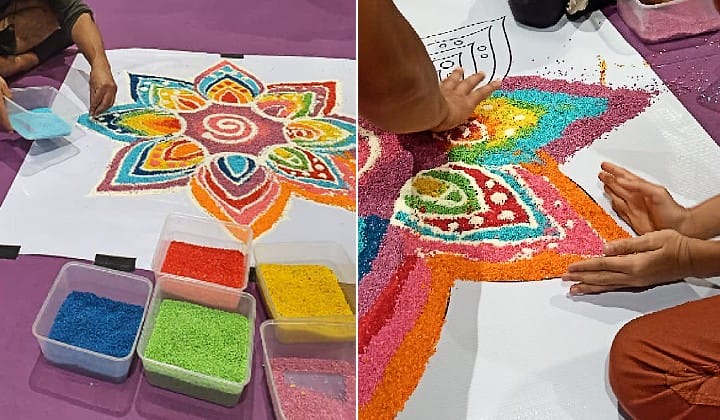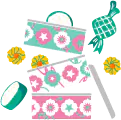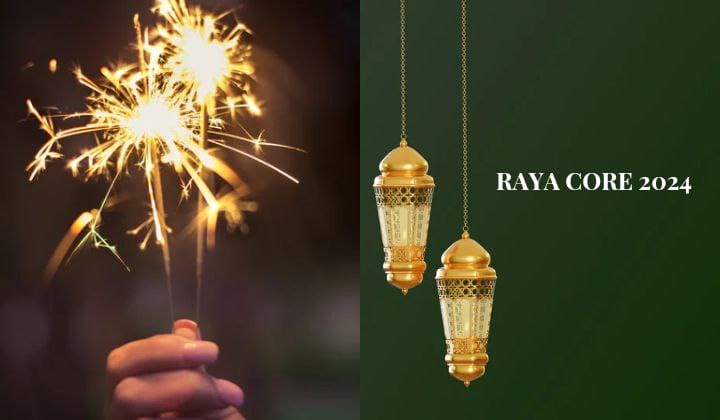We Celebrated Deepavali’s Circle Of Light Learning How To Make Colourful Kolams
The workshop was hosted in collaboration with Gamuda Land in celebration of the Deepavali festive season.

Subscribe to our Telegram channel for the latest stories and updates.
It was a day filled with colour as the TRP troop spent our Saturday (22 October) discovering culture, and tradition, while expressing our creativity during a special Kolam decorative art workshop at the Quayside Mall, Kota Kemuning.
The workshop was hosted in collaboration with Gamuda Land in celebration of the Deepavali festive season and was taught by Kolam Guru Ruben Prakash along with his team of talented traditional artists.
The event was attended by mall visitors and families who came to experience firsthand what Kolam making was all about, and even took home some awesome goodies!

Beauty never-lasting
Translating to mean “beauty”, Kolams are these simple, yet colourfully intricate pieces of art that are drawn on the ground using dry, edible things such as grains of rice and flour. They are usually etched to mark special occasions within the Indian community, like festive seasons, weddings and other celebrations.
Read More: What Are Those Pretty Colourful Designs On The Floor During Deepavali?
As we were working on our very own grainy artwork, our instructor Kevin told us that Kolams are made to signify auspiciousness and as temporary abstractions to welcome prosperity.
This is because Kolams are supposed to be short-lived. Part of the reason why they are made from edible material is that the artwork is also meant as a sort of offering to the critters we share this world with.

Kevin shared that, traditionally, Kolams are drawn outside and left overnight to be eaten away by the birds and the bugs, and be disposed of the very next day.
You can even say that the art form teaches us the lesson that no matter how hard we work on something or how beautiful something is, it can’t lasts forever.
Fun for the whole family
Ruben told us that he was excited to see people of all shapes and sizes having fun during the cultural learning experience.
I feel happy seeing people of multiple cultures having fun and taking their time to learn something from our traditions. We want people to learn and experience something that they’d remember. And maybe the next time they see a Kolam at a shopping mall or something, they’d appreciate the hard work that’s gone into something that they themselves had experience making before.
Ruben Prakash.
“At first we were worried because we’d never done something like this before. We were worried that it wouldn’t turn out right.” Gushed Mohd Shahidan from Pulau Indah, who participated in the art workshop with his three boys.

He explained that the event was an amusing team-building activity between the family and was glad to have had the chance to learn how to make something artistic.
The kids had fun playing with colours, and we learned how to do something with teamwork to make such a fine piece of traditional art together.
Mohd Shahidan to TRP.
Whitney and her son Chong Yew Seng from Puchong also had a fun time learning something new at the workshop.
The mother shared that all the hard work put into finishing their project was a great opportunity to teach her son about discipline and how to appreciate other people’s handiwork.
I say to him—You see, very hard, right? So don’t spoil other people’s decorations.
Whitney to TRP.
Kolam 101
Although we were only required to follow a ready-made design that was printed out and taped to the floor, we soon realized that making the perfect Kolam was definitely harder than it looks!
Picking the right colour combination to use and just keeping the shifty grains within the lines proved to be quite a challenge.
But, Kevin said that it was always best for us to start from the middle and make our way outwards in order to keep things organised and remember just to have fun with it. (Easy to say for someone who has more than 10 years of Kolam-making experience and can do it free-hand…)
So we did just that—Dipped our hands in coloured rice and improvised our way forward making our very first Kolams, only to gleefully whisk away our handiwork at the end of the program.

If you’d like to learn more about the culture and traditions of making Kolam, watch TRP’s short video featuring Ruben Prakash and the Pure Life Society home for underprivileged children made in celebration of Deepavali’s Circle of Light.
Share your thoughts with us via TRP’s Facebook, Twitter, and Instagram.
Typing out trending topics and walking the fine line between deep and dumb.








